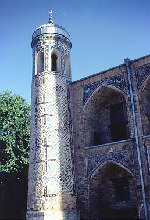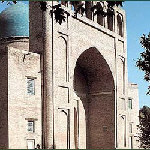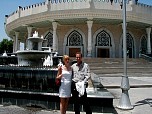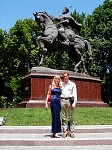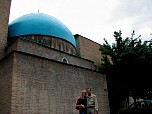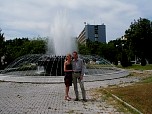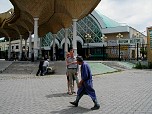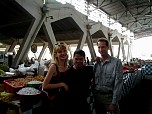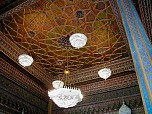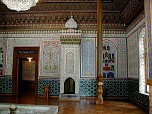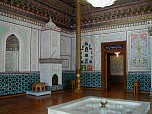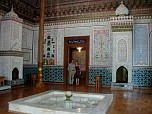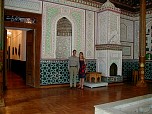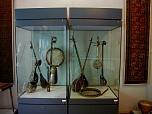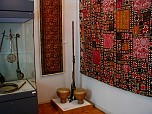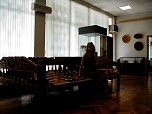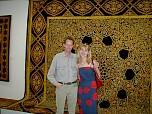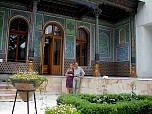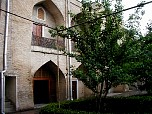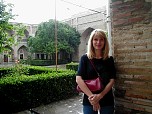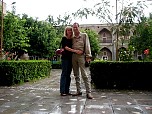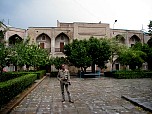|
In the centuries past, Tashkent, the present capital of Uzbekistan, was called Chach, Shash, Binkent at various times. Each of the names is a part of the city’s history. Tashkent has always been an important international transport junction. Unfortunately, only a small part of its architectural past is preserved, due to demolition of historical and religious buildings after the revolution of 1917 and a massive earthquake in 1966. Some old buildings lie in the old town to the west of the downtown. A myriad of narrow winding alleys, it stands in sharp contrast to the more modern Tashkent. Of interest among the older buildings are the 16th century Kukeldash Madrassa, which is being restored as a museum, and the Kaffali-Shash Mausoleum. Many of the Islamic sites in Tashkent, like Khast-Imam structure, are not open to non-Muslims, and visitors should always ask permission before entering them. Kukeldash Madrassa (XVI century). Kukeldash Madrassa is one of the few remained monumental architectural monuments of Tashkent. It was built in the second half of the 16th century in the time of Abdullachan (1557-1598) under the Leadership of Kulbobo Kukeldash who was a vizier, a scientist and a poet. Madrassa Kukeldash is under the authority of Religious Board of Mawarannahr Moslems, and at present it is a regularly acting mosque. There is a primary school, which teaches the basis of Islam. Khast-Imam. An interesting ensemble was erected in a place called Khast-Imam. The ensemble comprises the Barak-Khana Madrassa of the 16th century, Teleshayakh Mosque, part of which houses an important religious library, the 16th century Kaffal-Shashi mausoleum, which was built over the grave of Abubekr Mukhmmad Kaffal-Shashi, and the Imam al-Bukhari Institute. Zamgi-Ata Mausoleum. There is one of the sacred places now known as Zangi-ata nearly Tashkent on the caravan route. The beginning of the creation of architectural memorial at the sacred grave is connected with the name of famous Amir Temur. The idea of building the mausoleum on the grave of Zangi-ata, which was known as a healer, appeared near that time. His literature pseudonym is written with good calligraphic hand on the snowy marble gravestone inside the mausoleum. His name was Aihodja, the son of Tadhodja. Tashkent houses many museums of Uzbek and pre-Uzbek culture. These include the State Art Museum, which houses a collection of paintings, ceramics and the Bukharian royal robes. The Museum of Decorative and Applied Arts exhibits embroidered wall hangings and reproduction antique jewelry. As important historical figures, such as Amir Temur – better known as Tamerlane in the West – are being given greater prominence, the exhibits and perspective of the museums are also changing. |
|

